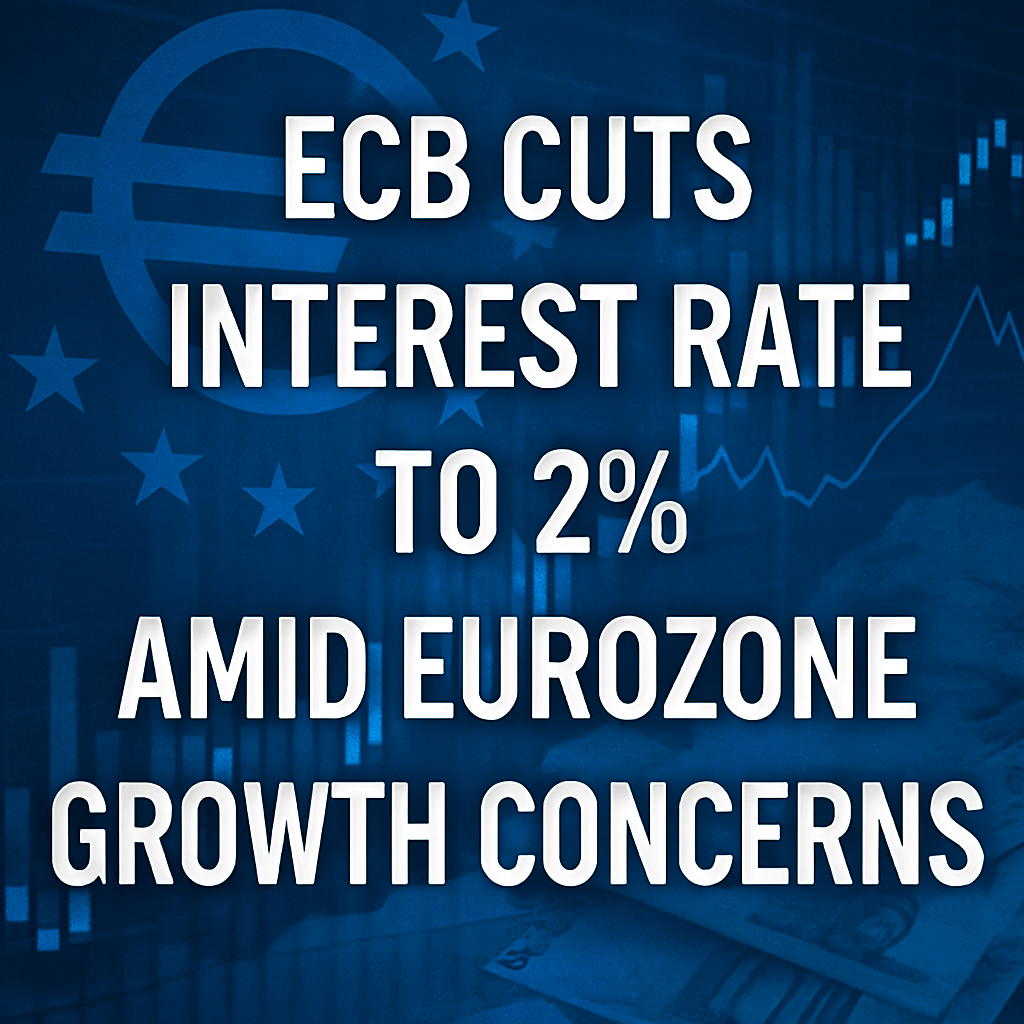ECB Cuts Interest Rate to 2% Amid Eurozone Growth Concerns

The European Central Bank (ECB) has entered the second year of its easing cycle, implementing yet another interest rate cut amid increasing fears surrounding the eurozone’s economic performance and escalating global trade tensions. On Thursday, the ECB cut its key deposit rate by a quarter point to 2%, marking the seventh consecutive reduction and the eighth since June of the prior year.
Current Economic Conditions
This rate cut comes as the ECB also revised its inflation forecast for 2025. The central bank now anticipates consumer price increases to align with its 2% target this year, a significant adjustment following a post-pandemic inflation surge. This shift indicates that monetary policy is now increasingly aimed at stimulating economic activity across the 20 member countries of the eurozone, where growth figures have been disappointing.
Trade Tensions and Economic Outlook
“Uncertainty surrounding trade policies is expected to weigh on business investment and exports.”
The geopolitical climate, especially relating to U.S. trade policies under the Trump administration, has severely impacted the outlook for the eurozone. The secretary of the ECB noted that tariffs imposed by the U.S. specifically on European goods have deteriorated forecasts, raising concerns about the potential repercussions on European exporters. Current tariffs stand at 10%, with higher duties imposed on certain sectors, contributing to the eurozone’s economic struggles.
Monetary Policy Adjustments
While the ECB has taken steps to stabilize inflation, analysts are questioning whether the current trajectory of interest rate cuts is sufficient to promote the economic recovery needed. The ECB has remained optimistic about future growth, maintaining its 2025 growth forecast at 0.9%. This decision reflects a delicate balance as policymakers contend with external trade pressures and fluctuating economic indicators.
- Inflation Control: Inflation in the eurozone settled at 1.9% in May, facilitating the ECB’s decision to recalibrate its monetary policy.
- Investment and Spending: The ECB noted that increasing government expenditure on areas like defense and infrastructure should bolster growth in the medium term, despite the prevailing uncertainty in trade policies.
ECB Leadership and Future Policy Directions
Market observers are keenly awaiting ECB President Christine Lagarde’s post-meeting press conference for signs of a potential pause or broader strategy in monetary policy that might align with evolving economic conditions, particularly as some analysts suggest the need for saturation in rate cuts by July.
Lagarde has maintained that she is committed to her tenure, which extends until 2027, despite recent discussions about a possible transition to the World Economic Forum leadership. The ECB’s assertion of her determination signifies stability, which is crucial for investor confidence.
Implications of U.S. Tariff Policies
The ongoing tariff war led by U.S. President Trump continues to impart significant complexities for the ECB. Recently, Trump escalated tariffs on aluminum and steel from 25% to 50%, creating tension in international trade relations. Analysts like Carsten Brzeski from ING predict that this volatile environment will prompt the ECB to consider further rate cuts, intending to counterbalance the erosive effects of these tariffs on eurozone inflation.
Possible Future Developments
- Fiscal Responses from EU Member States: The potential for an inflationary fiscal stimulus from the new German government could remold expectations around economic recovery, requiring the ECB to respond dynamically.
- Monitoring Economic Resilience: Any signs of constructive economic data from the eurozone amid fiscal stimulus may also influence the ECB’s future policy maneuvering.
Conclusion
The ECB’s recent interest rate cut to 2% reflects broader economic anxieties and the central bank’s efforts to sustain stability in a turbulent global environment. As new developments continue to emerge on the trade front and within member states, the ECB’s actions will be pivotal in shaping the eurozone’s economic trajectory moving forward.
Source: fortune